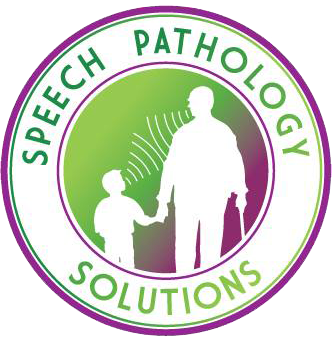In the practice of speech therapy, professionals continuously seek innovative techniques to augment traditional methods, aiming to provide the most effective treatment plans for individuals facing speech and communication challenges. One such approach is myofascial release, a technique not traditionally associated with speech therapy but showing promising results in improving speech, language, and communication abilities.
Understanding Myofascial Release
Myofascial release is a hands-on therapy technique focused on relieving tension and pain in the myofascial tissues — the tough membranes that wrap, connect, and support your muscles. This technique has been primarily used by physical therapists to treat musculoskeletal pain and dysfunction. However, its principles are now being applied in speech therapy, recognizing the interconnectedness of the body’s systems and the impact of myofascial tension on speech and facial muscles.
Techniques of Myofascial Release in Speech Therapy
Speech therapists employ various myofascial release techniques to address the specific needs of their clients. These can be categorized into direct and indirect techniques, each serving unique purposes in therapy. Integrating these techniques with traditional speech therapy practices allows therapists to address speech issues from a holistic perspective, ensuring that physical barriers to speech and language development are effectively managed.
Direct Techniques
Direct techniques in myofascial release therapy involve a targeted approach, where pressure is applied strategically to the myofascial tissue to identify and alleviate tight spots. This method aims to increase the flexibility and overall function of the muscles and fascia, the fibrous tissue that surrounds them. In the context of speech therapy, these techniques are particularly focused on the facial regions critical to speech production, such as the jaw, neck, and mouth. By addressing the stiffness and restrictions in these areas, speech therapists can help improve the range of motion and ease of movement, facilitating better speech articulation and vocal quality.
Indirect Techniques
Indirect techniques offer a more subtle form of intervention. Instead of applying direct pressure, this method involves gently stretching the fascia until a point of resistance is reached. The aim here is to encourage the fascia to naturally ‘unwind’ and release tension on its own. This gentle approach aids in relaxing the fascial network and plays a significant role in reducing overall physical and emotional tension. For individuals undergoing speech therapy, this relaxation can translate into smoother, more effortless speech as the physical barriers to clear articulation are minimized.

Benefits of Myofascial Release in Speech Therapy
The application of myofascial release in speech therapy brings several benefits, notably in the areas of muscle function, speech development, and emotional well-being.
Improved Muscle Function: By alleviating tension in the myofascial tissues, speech therapists can increase the movement and flexibility of muscles involved in speech production, leading to clearer articulation and improved voice quality.
Enhanced Speech and Language Development: Myofascial release techniques can facilitate easier movement of the tongue, lips, and jaw, which are crucial for speech and language development. This is particularly beneficial for individuals struggling with articulation disorders or developmental delays.
Reduced Tension: Beyond the physical improvements, myofascial release can also offer emotional benefits, such as reduced stress and anxiety, which can impact speech and communication. A relaxed body can lead to more natural and effective speech patterns.
Aiding Swallowing Difficulties: The relaxation and increased flexibility in the muscles around the mouth, jaw, and neck also help to improve swallowing functions. For patients experiencing difficulty swallowing, myofascial release can help improve safety and efficiency by reducing muscle tension and improving coordination. This is important for individuals with conditions such as dysphagia.
Implementing Myofascial Release in Speech Therapy Plans
To incorporate myofascial release into their practice, therapists must undergo specialized training to understand the techniques and their applications fully. Tailoring the approach to each individual’s needs is important, as the effectiveness can vary based on the unique challenges faced by the person.

Your Pathway to Better Communication Starts Here
At Speech Pathology Solutions, we believe in enabling you to be the best version of yourself. With over two decades of experience, our team brings the latest in speech therapy advancements, including myofascial release techniques, to ensure you or your loved ones receive the highest quality of care. We pride ourselves on our ability to serve and educate families, respond promptly to inquiries, and collaborate with health systems to advocate for those in need. If you’re looking for personalized care that’s both comprehensive and convenient, look no further. Reach out to Speech Pathology Solutions today, and let us help you gain the confidence to speak with ease.
Myofascial Release FAQs
What is Myofascial Release?
Myofascial release is a therapeutic technique focused on relieving tension in the myofascial tissues, which are the connective tissues surrounding muscles. It aims to improve flexibility, function, and reduce pain.
How does Myofascial Release benefit speech therapy?
It helps by improving muscle function and tone, especially around areas critical to speech such as the jaw, neck, and mouth, thus facilitating clearer speech and language development.
Are there different techniques of Myofascial Release used in speech therapy?
Yes, there are direct techniques that apply pressure to release tight areas, and indirect techniques that gently stretch the fascia to encourage relaxation and tension reduction.
Can Myofascial Release help with more than just speech clarity?
Beyond improving speech clarity and muscle function, myofascial release also aids in reducing physical and emotional tension, contributing to overall well-being.
Who can benefit from Myofascial Release in speech therapy?
Individuals facing speech, language, or communication challenges, especially those experiencing physical tension affecting their speech, can benefit from myofascial release techniques.

